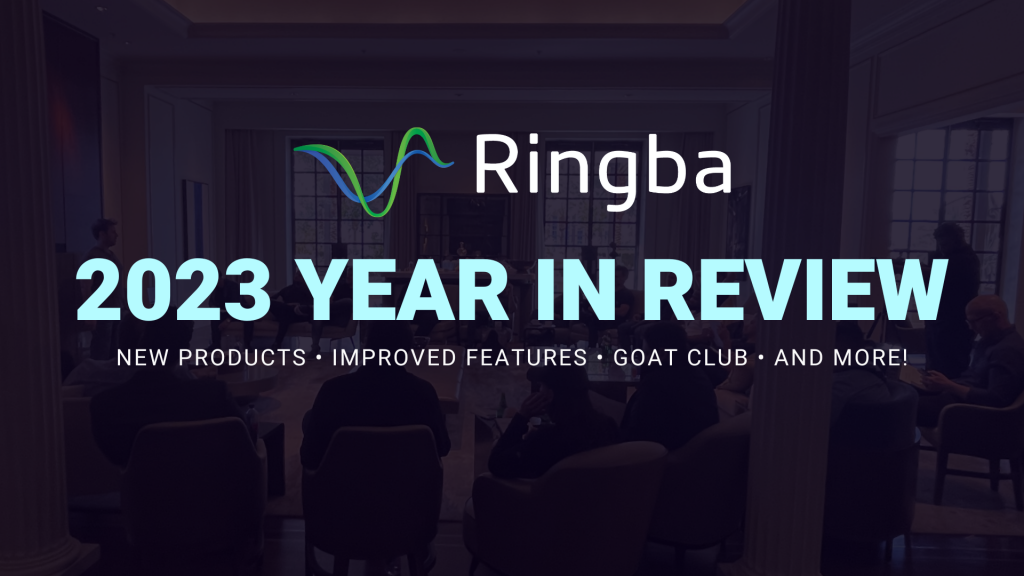To be successful in any industry, you need to know the specific underlying language that people speak, as well as the associated language around it.
Contents:
# | A | B | C | D | E | F | G | H | I | J | K | L | M | N | O | P | R | S | T | U | V | W
#
3rd Party – “Third Party” – A company or other entity that is a service provider or partner, but not wholly owned. For instance, we use a 3rd party CRM to track our sales data.
A
ACH – Automated Clearing House – An electronic funds transfer system in the United States designed for bulk batch processing of payments and typically used by companies sending large volumes of regular payments to vendors. This form of transfer is not immediate and can get recalled.
AI – Artificial Intelligence – The ability of a computer to mimic human cognitive skills such as learning and understanding.
Analytics – The process of collecting, interpreting, and communicating meaningful patterns and actionable insights from data.
AOV – Average Order Value – The average value per order over some time like a week or a month. This statistic is useful when planning for future sales or working with partners that are performance-based.
AP – Accounts Payable – The department responsible for paying bills and sending payments to clients, vendors, and partners.
API – Application Program Interface – A set of protocols and tools for building software applications.
AR – Accounts Receivable – The department responsible for making sure all funds owed to the company are received.
Arbitrage – A business practice that involves taking advantage of the price difference between two markets.
ARR – Annual Recurring Revenue – A measure of how much recurring revenue a business can expect every year. It typically gets used by companies that sell software, subscriptions, or services.
Asset – Something that holds value or generates a profit on behalf of yourself or your business. Can also be a human asset which is a cultivated relationship where value can get extracted.
Attrition Rate – The rate customers cancel their recurring billing, or abandon a product or service.
B
B2B – Business to Business – When a business sells to another company directly. B2B Campaigns are typically more difficult, but also generally are larger.
B2C – Business to Consumer – When a business sells directly to a consumer.
Bi-Weekly Payments – Payments made every two weeks. Typically payments made on a bi-weekly basis are constructed as ‘bi-weekly net 7’ which means the funds due for those two weeks will be paid seven days after the closing of the billing period.
Big Data – The process of working with large and complex datasets to find meaningful patterns.
Brand – The overall perception of a company in the eyes of a consumer.
Brokering – A business practice that facilitates a transaction between a buyer and seller in exchange for a commission.
Business Intelligence – The strategies and tools that a company uses for analyzing business information.
C
Cash Flow – The flow of revenue into your business every month.
Chargeback – The return of funds to a consumer, initiated by the issuing bank of the instrument used by a consumer to settle a debt.
Churn Rate – The rate in which users leave a platform or service.
COGS – Cost of Goods Sold – The final cost of your products when they arrive at you as finished goods.
Collaboration – When two or more parties work together to realize a goal. Sometimes called a “JV” or “Joint Venture.”
Collections – The process of pursuing payment for outstanding debts.
Commission – Compensation based on performance, typically for selling a good or service on behalf of a company.
Contracts – A formal agreement between two or more companies that is enforceable by law.
CRM – Customer Relationship Management – The software used to manage consumer information and the sales process.
D
DBA – Doing Business As – Government registration of a brand or trade name that someone is operating under.
E
eCheck – The electronic transfer of money from one bank account to another.
F
Feedback – The process of reviewing inputs and their corresponding outputs to improve performance.
G
GDPR – General Data Protection Regulation – Regulation for simplifying data privacy laws in the EU and protecting consumers with severe penalties for non-compliance.
1) Going Direct – The process of learning who an advertiser is, and cutting out the middlemen in the value chain. For instance, if you are working with an advertiser at an affiliate network and ‘go direct,’ you would cut out the affiliate network and work directly with the advertiser. Typically comes with higher payouts and increased profit margins, but also carries more payables risk. Most upstanding affiliate networks pay their affiliates even if the advertiser doesn’t pay their invoice. If you go direct to an advertiser, you do not have an affiliate network in the middle guaranteeing your payout. Affiliate networks usually always pay faster than advertisers do, bearing some of the financial risks in the transaction. By ‘going direct’ you will most likely have to wait longer for your payment.
Gross Margin – Revenue minus the cost of goods and advertising costs leave your gross profit or gross margin.
Gross Revenue – The total of all funds that came into your business during a specific period.
H
Home Services – Businesses that provide services to homeowners.
HR – Human Resources – The management of staff with an end goal of maximizing employee productivity, satisfaction, and performance.
I
Incentive Alignment – When the goals and objectives between two business are in alignment with each other in a collaborative way. When incentives align, the likelihood of a win-win situation is high.
Incorporation – The process of setting up an independent business entity. In the US, these can include “C Corps.” “S Corps” and “LLCs” (Limited Liability Company).
Independent Agent – A third party that acts on their behalf.
Insurance – A guarantee of compensation for specified loss or damage in return for the payment of a premium.
Invoice – A bill sent from one party to another for money due.
J
Jurisdiction – The official power or authority to make specific decisions in a particular region or industry. Also used as another way to say a country. “We have entities in a few jurisdictions (countries).”
K
KPI – Key Performance Indicator (Client KPI) – A single metric used to measure and evaluate the performance and effectiveness of an organization, project or business activity.
L
Legal – Anything that is permitted or required by law. Also, the department that manages contracts and legal requests inside an organization.
Liabilities – The number of outstanding payables and debt your organization has at any given period.
Licensed Agents – Any call center agent that requires some type of formal licensing through a governmental body or other institution.
Local – A business that operates in a specific and usually small geographic region.
LTV – Lifetime Value – The average value of a user after they are no longer a customer. For instance, the LTV of a user that is paying 10 per month for six months is 60 if they do not renew their subscription.
M
Mail Forwarding Service – A mail service that is like an independent post office box. The government does not run these businesses and typically provide other services like mail forwarding, email notifications when mail arrives, scanning and shredding of mail, and more.
Margin – The amount of money in a transaction that is considered profit. For instance, if you sell something for 100 and your cost is 50, you have a 50% margin of $50. To calculate your margin in dollars, you subtract your cost from revenue. To calculate your margin as a percent, divide the dollar margin by the gross.
Merchant Processor – A business that processes credit card transactions on behalf of a company.
MRR – Monthly Recurring Revenue – A measure of how much recurring revenue a business can expect every month. Typically in use by companies that sell software, subscriptions or services.
N
Negotiation – The process of agreeing to terms between two parties that are entering into a mutually beneficial relationship.
Net Margin – Net margin is revenue minus the cost of goods, advertising, and any other overhead required to run your business.
Net Payment – “Net 7” – Payment terms where one party will pay a specific number of days after a set pay period. For instance, monthly net 7 payment terms mean whatever amount is due at the end of the month will be paid seven days after the closing of that billing period.
Net Revenue – The amount left over after you take the gross revenue and subtract all costs of doing business.
Non-Payment (Burn) – Money owed to a business that has not gotten paid.
NPS Scores – Net Promoter Score (Net Promoters) – A method for determining how loyal customers are to a brand or product.
O
Onboarding – The process of introducing and familiarizing an employee or client with a company’s products and services.
Operating Expenses – Expenses required to run a business, not including the cost of your goods or advertising.
Opportunity Cost – When running a business, you have to be careful and precise about your time allocation. Opportunity cost is the cost of your time and energy focused on one task when you could focus on another. For instance, if you are spending 3 hours a day making banners for your advertising campaign instead of doing business development, you could outsource that function to someone else cheaply, reclaiming your 3 hours. The time you spend missing out on opportunities because you are too busy is the opportunity cost.
Outsourcing – The process of finding labor sources outside of your home country, typically avoiding tax liabilities and government requirements. The global labor force also works at a market rate and is cheaper than labor in first world countries.
P
Payables – The amount of money owed from your organization to clients and vendors at any given period.
Payment Terms – (Terms) – The criteria that must get met to receive payment.
Payout Bump – “Bump” – Asking an affiliate network or affiliate manager to ‘bump’ your payout up when you want more money for each conversion. You should always ask affiliate managers to raise or ‘bump’ your payouts for any campaigns you plan to run for long periods, or that have substantial volume. Affiliate managers will typically bump up any payout when asked without much resistance, but won’t do it unless prompted. An excellent way to get them to raise your rates is to compare with another Affiliate Network or to let them know that you have existing traffic to the campaign.
PCI DSS – PCI Compliance – Payment Card Industry Data Security Standard – A set of standards that were created to increase controls around credit cardholder data and to reduce credit card fraud.
Platform Fees – The costs associated with using a platform.
PO Box – Post Office Box – A mailbox set up to receive mail at a government post office that can get used for personal or business uses.
PR – Public Relations – Using the press to distribute information about your business driving customers and name recognition. PR is not a marketing plan unless you have a background in it and are incredibly experienced. Today’s media cycles run in periods of hours, not days, and it is complicated to hold their attention long enough to get repeated exposure.
Pre-paid – The practice of paying for a service or product before receiving or using it.
Privacy – The right to withhold or provide personal information.
Profit – The money left over when all business expenses have gotten paid.
R
Rates – The cost of using a product or service.
Receivables – The amount of money due to your organization at any given period.
Registered Agent – A responsible party registered with a government office responsible for receiving communication about a corporate entity.
Retention – The ability to retain customers over some specified period.
Revenue – The gross amount of money you receive whenever criterion gets met.
Revshare – When the revenue generated from a sale gets split between 2 parties based on the total dollar volume spent. For instance, if you received a 10% revenue share for whatever products you sold on a website when you sell 100 worth of goods, you receive a 10 commission.
ROI – Return on Investment – A marketing campaign’s primary purpose is to generate a profit for the company, client, product, or service that is getting promoted. It is important to calculate that profit regularly throughout the process and monitor it on an ongoing basis by determining the campaigns ROI or return on investment. ROI can be calculated by subtracting the advertising costs from the gross revenue and dividing the difference by the original advertising cost and multiplying by 100 for the percentage ROI.
S
SaaS – Software as a Service – A business model for software companies that charge customers recurringly for access to their technology.
SEPA – Single Euro Payments Area – An initiative in the European Union for integrating payments and simplifying banks transfers in euro.
Service – The business practice of providing specialized work in exchange for payment.
Slack – A cloud-based tool for communicating and collaborating with teams.
SMB – Small to Medium Business – Established businesses that are limited in scope and resources due to their size and requirements.
Spread – Another term for margin.
Start-Up – A newly established business.
T
Tax Liability – The amount of money owed to the government for taxes during a specific taxable period.
Trade Show – An event for businesses and individuals involved in a particular industry to network.
Transparency – The practice of operating in a way that it is easy for others to see what actions get performed.
U
Upsell – An additional offer presented to a user during or after the checkout process to increase the average order value.
V
Vertical Integration – The process of cutting out all of the vendors, manufacturers and service providers in a value chain to control the entire process and reap the rewards of lower costs and higher margins every step of the way.
W
Weekly Payments – Payments made weekly. Typically payments every week are constructed as ‘weekly net 7’ which means the funds due for that week will be paid seven days after the close of the billing period.
Whitelabel – A business practice where a product or service is created by one company and then re-branded by another to make it look like their own.
Wholesale – The price of bulk goods directly from a manufacturer, broker or importer.
Wire Transfer (TT – Telegraphic Transfer) – An encrypted telegraphic transfer of funds using the global banking system. The safest and fastest form of transferring funds the banking system offers and cannot be reversed once processed unless there are extreme circumstances.







